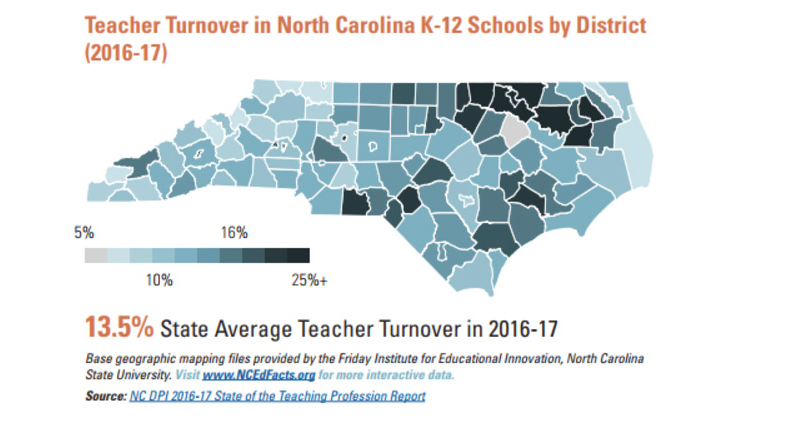
The education field needs a jolt.
No, make that JOLTS — the Job Openings and Labor Turnover Survey data from the Bureau of Labor Statistics. You wouldn’t know it from the discourse over public schools, but according to the most recent results, public education has some of the lowest rates of job turnover in our economy. In fact, public education workers, mainly teachers, have lower turnover rates than employees in every other industry except the federal government.
This is not a new or surprising result — public education consistently has some of the lowest turnover rates among all industries, in good economic times and bad. But if your news diet consisted only of reports from the education field, you might be forgiven for thinking teacher retention rates are in crisis.
Exactly why this myth persists is worthy of a longer conversation, but let’s set that aside for the moment and analyze what we actually know. That might help us get to the “why” and a better understanding of teacher retention rates — and what to do about them.
We know that teacher turnover has risen over the past 30 years by a couple of percentage points. We also know that teacher churn is harmful to students, and that replacing a single teacher costs districts thousands of dollars. These facts can lead to the perception that teacher turnover is really high, and that it’s always a problem. The nuance is much more interesting, though, and it presents a far different story than just “teacher turnover is bad” or “teacher turnover is fine.”
First, as shown in the JOLTS data, public schools have much lower rates of job openings, hire rates, quit rates, and voluntary and involuntary separations than every industry except the federal government. Across all these measures, public schools have employee mobility rates that are roughly half the national averages. The public education sector has far less employee churn than practically all other sectors of our economy.
We should be celebrating this as good news, but instead we’ve treated all churn as bad. For instance, we know that teacher churn in general is harmful to students. But research suggests that schools aren’t losing their top teachers; rather, teachers who leave their schools or the profession tend to be lower-performing than the ones who stay. It would not be a productive use of resources to reduce turnover rates for low-performing teachers.
As a real-world example, the District of Columbia’s strategy of swapping out low-performing teachers for higher-quality replacements has proven to be effective despite producing higher churn. Urban charter schools are another exception: They yield strongly positive outcomes for low-income and minority students despite high rates of teacher and principal turnover. Teach for America does it, too; one study found that its teachers were still a net positive for students even after accounting for higher teacher turnover.
We also don’t talk about teacher turnover in the proper context. State data suggest that it is much higher in some places than in others, rather than being some sort of universal issue. Consider the map below from the annual “Facts and Figures” report from BEST NC. It maps teacher turnover rates by district in North Carolina and finds a statewide turnover rate of 13.5 percent, which is lower than the national average. But some districts have turnover rates about half that, while others are double the statewide average. Interestingly, this year’s map looks nearly the same as the one BEST NC created last year.

In other words, North Carolina doesn’t have a generic teacher retention problem, but it might have a teacher retention disparity problem. This pattern shows up in other states and districts as well. When we looked at retention rates by district in Colorado, we found even larger gaps than in North Carolina, and academic work from John Papay, Andrew Bacher-Hicks, Lindsay Page, and William Marinell found similarly large disparities when they looked at longitudinal teacher retention rates in 16 large school districts spread across seven states. When the National Council on Teacher Quality looked at turnover within Miami-Dade County Public Schools, they found significant disparities even within the same district.
So, should we as a field be working to improve teacher retention? Sure. It still costs money to hire and retrain teachers. But the evidence suggests our money would be better spent working to boost retention for effective teachers working in specific hard-to-staff schools and subjects, rather than worrying about turnover as a generic problem to solve.
— Chad Aldeman
Chad Aldeman is a principal at Bellwether Education Partners
This post originally appeared at The 74.


